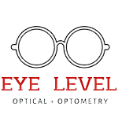
Everything You Need to Know About Hyperopia AKA Farsightedness
Everything You Need to Know About Hyperopia (Farsightedness)
There might have been times where you are unable to focus on what is right in front of you, but can seamlessly gaze into the distance for hours. While it could be because you are not paying enough attention but, in some cases, it has to do with a common eye condition known as hyperopia, also referred to as farsightedness. In Hyperopia, the person is able to see things in the distance relatively clearly than what they can see in close up. It is simply a result of your eyes being able to focus more easily on distant objects than on by nearby ones. The degree of hyperopia you face could vary from person to person.
Some children having mild to moderate hyperopia are able to see both close and distant objects without glasses. This is a result of the eye muscles adapting and squinting to overcome farsightedness. The extent of farsightedness can influence your ability to focus properly, and for people having severe farsightedness might only be able to see objects that are a significant distance from them. In most cases, hyperopia is present at birth and tends to be something that runs in the families. Usually, the correction method requires wearing glasses or contact lenses. However, some people also consider undergoing a surgical procedure to get rid of the eye condition.
Who is at risk for Hyperopia? – Am I?
While the eye condition is very common, there are certain groups of people who have a higher likeliness of getting the condition. As of general, farsightedness is observed in about 5% to 10% of American, making it a highly commonly observed condition. In the case of children having hyperopia, it is not uncommon for them to grow out of it. On the contrary, as you age, you become more likely to have it. More importantly, the condition can also be inherited, and if both parents have hyperopia, there is a very strong chance of the child being affected by it as well. While many groups of people might be at risk of it, it is important to know what causes it.
So, What Causes Farsightedness?
It is best to get a diagnosis for any symptoms from a certified professional, however, it is equally important to understand the cause of it. In a hyperopia eye, the light cannot be bended or refracted properly. Because of which, the eye has to under focus and create incomplete images on the retina, and hinders one’s ability to see correctly. To better comprehend how the cause causes can inconvenience, image a word picture:
- Firstly, the light enters the eye and is then refracted to pass through two parts – the cornea and then through the lens.
- Secondly, the light after entering into the deeper part of the eye forms a focus point onto the retina, which is a thing layer of tissues located at the back of the eye.
- Lastly, the retina sends the information extracted from the light to the brain to be comprehended by you. For the case of someone with normal vision – this is how events would unfold.
However, for someone having hyperopia, the problem arises at the refraction stage which can be caused by multiple reasons. Some of which could be the eyeball being too short and unable to register the light accurately. Another cause of it can be that the cornea is too flat, or the lens is depleting with age. Fortunately, while the causes can vary – there exists many standard methods which can be used to fix hyperopia.
How to Fix Hyperopia (Treatment of Farsightedness)
There are a number of ways which can be used to fix farsightedness, after an initial checkup – you can take on any form of treatment plan depending on the degree of the condition and personal preference. Generally, there are three options which you can consider to treat hyperopia:
Get Prescription Eyeglasses
An easy and efficient quick fix solution to farsightedness can be by getting prescribed glasses. Eyewear work by ensuring that the light hits your eyes at the right angles and is focused into the retina. Based on the numbers prescribed, you can even opt for a number of different eyewear option. While this is a treatment plan, it is a lifelong one, and therefore, might not be preferred by some.
Get Contact Lenses
Contact lenses work similar in mechanism to eyeglasses, they correct the way the light bends and enters your eye. They are small lenses that sit directly onto your eyeball and are comfortable to wear and also convenient for use. However, they cab cause dry eyes or even eye infections if not taken care of properly.
Consider Refractive Surgery
If an option, you can opt for refractive surgery, a procedure in which the shape of your cornea is surgically modified. Some common options are Laser in-situ keratomileusis (LASIK) and photorefractive keratectomy (PRK), After the process, the eye’s ability to focus light improves greatly, and can help some people leave the need for glasses or contact lenses altogether.

